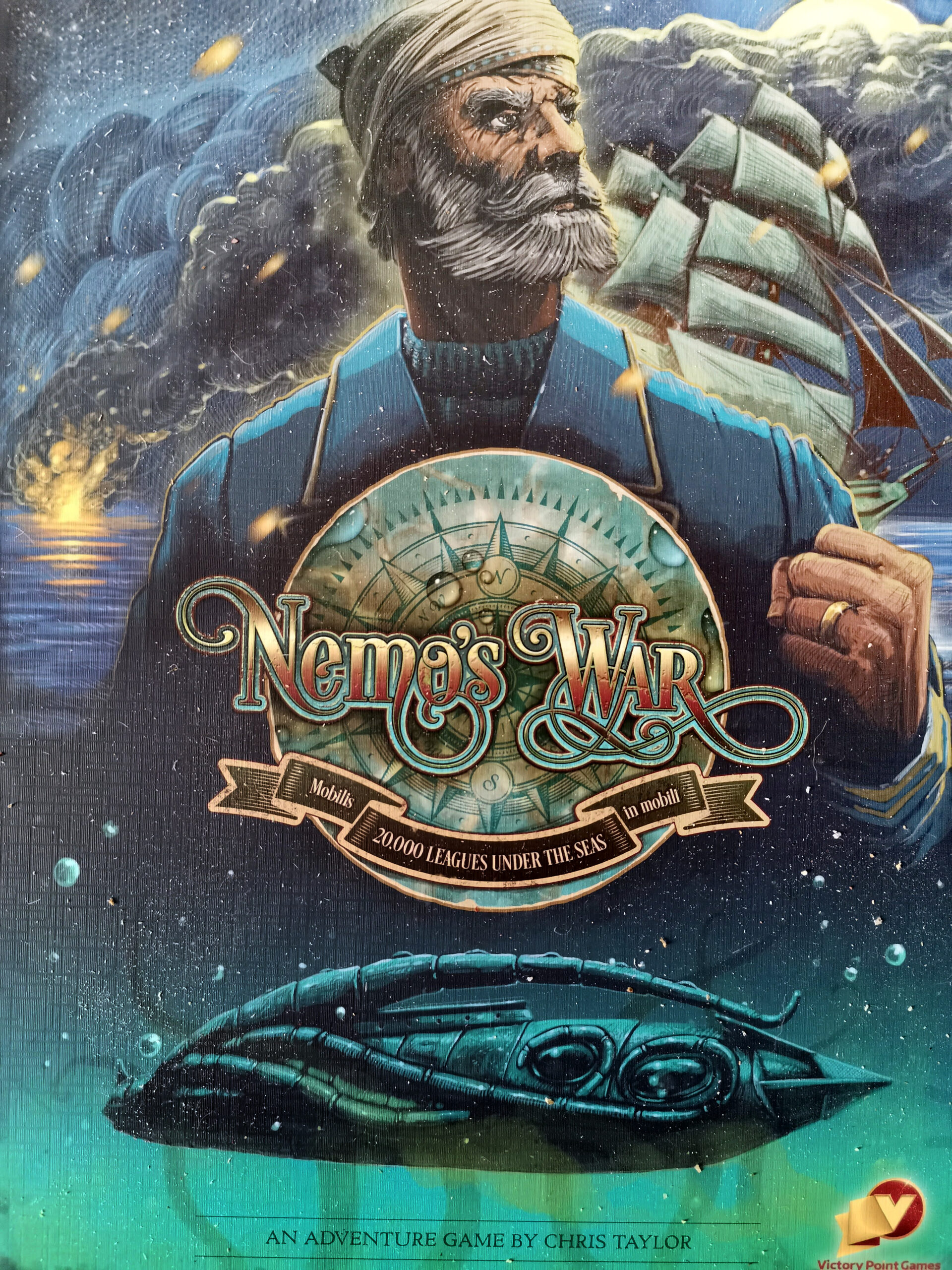Nemo’s War 2nd Edition pays homage to Jules Verne’s classic novel, Twenty Thousand Leagues Under The Sea, following the adventures of Captain Nemo and his crew aboard the Nautilus, his futuristic (at the time it was written) submarine. It’s a game designed from the ground-up to be a solo experience, and uses the content of the original book to create a narrative game that’s unlike any I’ve played before.
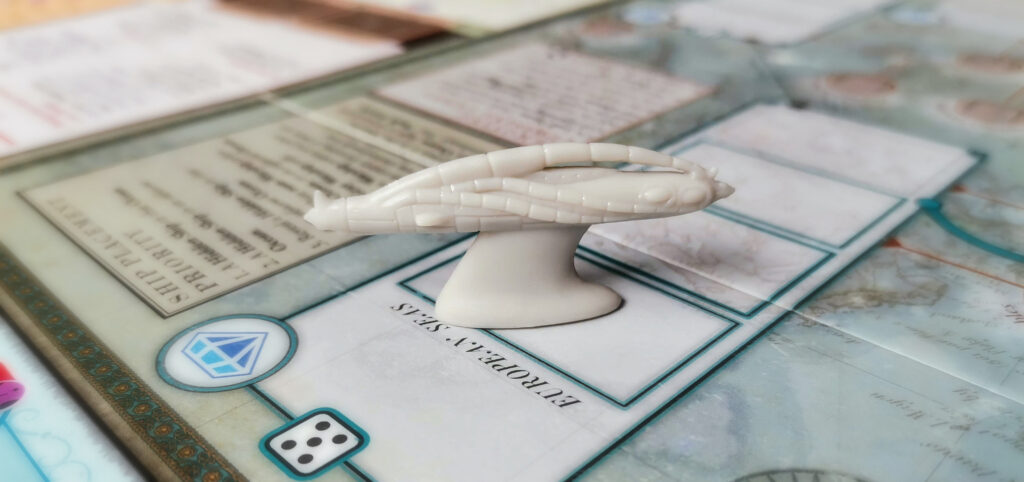
Background
The original Nemo’s War was published in 2009 by Victory Point Games. It was widely regarded as a good game, but not necessarily an exceptional one. Chris Taylor’s game design was great, and a very early example of how to do solo games well, but the artwork and graphic design was nothing to write home about, and didn’t really do much to sell the game. So when artist Ian O’Toole (The Gallerist, Vinhos Deluxe Edition, Irish Gauge, Lisboa) was brought in on the redesign, I’m sure Victory Point knew they were on to a winner. They were right too, the Kickstarter met its goals within 12 hours of going live.
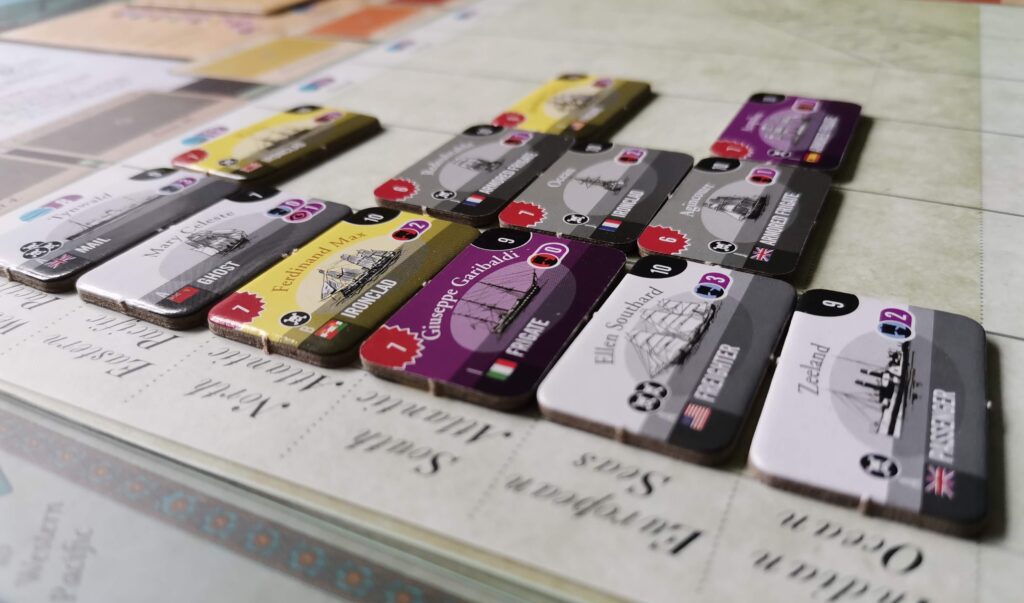
The Story
Unlike some games where the theme can feel tacked-on, the theme and story of Nemo’s War is integral to the experience of the game. As mentioned above, Jules Verne’s 150 year-old classic novel Twenty Thousand Leagues Under The Sea is the inspiration, and the player takes the role of the titular Captain Nemo. Fans of the story will be glad to know that the other characters from the story like Professor Arronax, his faithful servant Conseil, and master harpooner Ned Land are all present in the game mechanically and in the story.
The game loosely follows the plot, enough to visit most of the major plot points of the story, but without being too prescriptive and trying to follow it rigidly. You, as Captain Nemo must captain the Nautilus as it traverses the world’s seas and oceans finding treasures and sea monsters, engaging in naval warfare with any nation impudent enough to cross his path, and getting involved with uprisings across the globe. If you’ve ever read the book you’ll know that Nemo has no love for the world above the water, so the game suits the theme perfectly.

What’s in the box?
The first thing that strikes you with Nemo’s War is the box art – it’s beautiful. That lavish attention to detail and gorgeous design touches everything inside the box too. The board is the centrepiece, and the fact that Ian O’Toole was responsible for the graphic design as well as the artwork means this is one of the nicest, most useful, and best designed boards I’ve ever had the pleasure to play on. Rather than just having a space for a deck of cards, it’s thematically designed into the board, which looks like it’s Captain Nemo’s desk.
The ship tokens are small, functional, but no less well-designed, and the cardstock used throughout is heavy, thick, and makes a very satisfying noise to put on the board. Which is lucky, as you’ll be putting things off and on the board constantly. The cards which drive the story have a really nice finish, and the design once again shines through.
Nemo’s War is really rules-heavy, and it’s this which I really think makes the art and design special. In your first few games you’ll need to refer to the rulebook constantly, and it’s something which hasn’t slipped the designers’ minds, as comprehensive reference boxes are all over the board, and the iconography and terminology used throughout is very clear. On top of all of that there are some pretty, transparent, plastic crystals, and an awesome Nautilus mini.
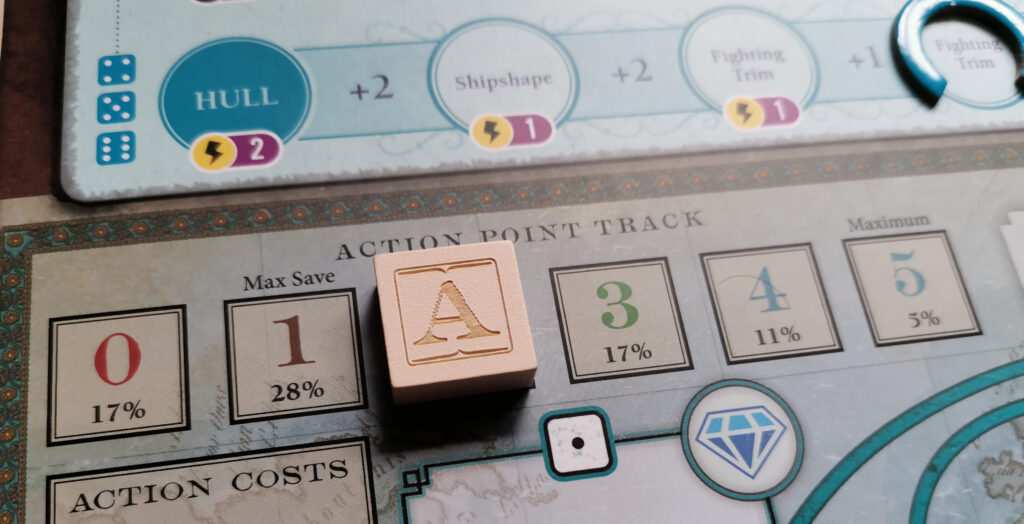
Setting Up
To begin the game the player firstly chooses a motive for Nemo. There are four available; war, anti-imperialism, exploration and science. A large tile for that motive then fills the scoring space on the board and alters the multipliers for the end-game scoring. If exploration is chosen, for example, there’s plenty of points for discovering wonders, but a penalty for sinking warships. After choosing a motive, the board is seeded with unknown ship tokens. Each spot on the board represents one of the world’s oceans or seas, and each has enough to accommodate a certain number of ships before civilian ones start getting replaced with warships.
A draw pile is constructed with help from the rulebook, based on the motive chosen, which includes several ‘Act’ cards which advance the story and add more dice to the game. The new dice are a great way to build tension in the story and ramp things up as the game reaches its finale.
Treasures are placed in the major oceans, the nautilus moves to a randomly chosen ocean, and the game begins.
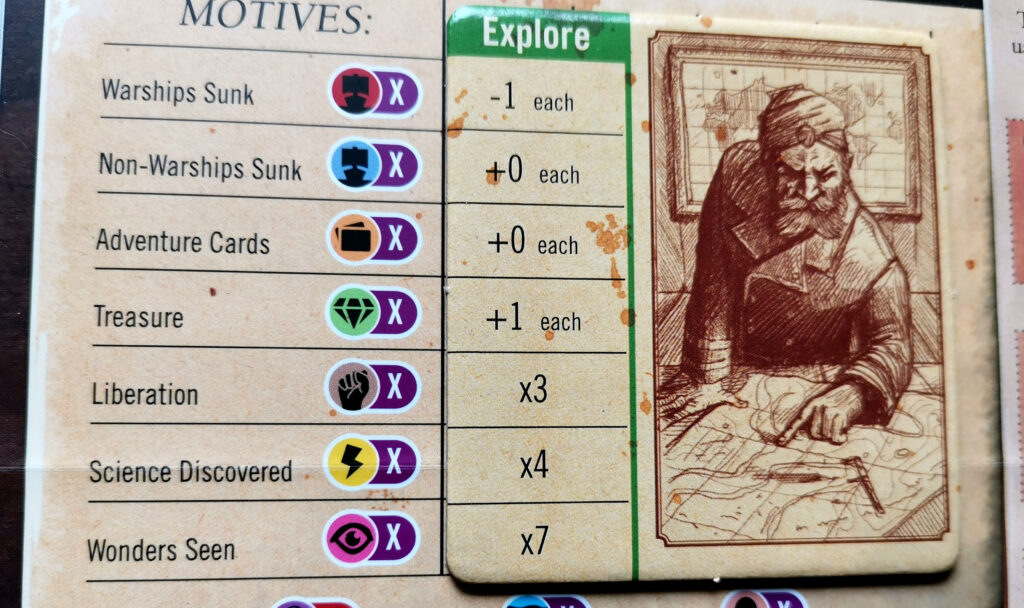
Playing The Game
Event Phase
The core mechanic for playing Nemo’s War is rolling dice. To some people that’s an instant red flag, especially in a solo game. Entrusting a game to luck sounds like it could be a disaster, so let’s have a closer look. Every turn begins with an event, and the top card of the draw pile is revealed. This card will either be a ‘Keep’ card which is added to your area, for potential use later, or a ‘Play’ card. Play cards almost always require something called a test, which is a core mechanic throughout the game.
Tests involve rolling two white dice, The total is compared to a table, a number written on a card, or the strength of a ship, and if the dice total is at least equal to that number, you pass the test. These can be affected by positive and negative Dice Roll Modifiers (DRM), but more on that later.
Placement Phase
Once the card has been resolved and the event phase completed, play moves on to the placement phase. This phase begins with the player rolling two white dice. The result of the roll determines two things: a) which oceans new ship tokens will be placed in, in the placement phase, and b) the number of action points available to spend during the action phase. Every major ocean space on the board has a die number next to it, so a ship token gets placed in the matching oceans (or a connecting one) for each of the dice rolled. If there’s an empty space in that ocean, you can put an undiscovered ship token there. If it’s full however, you draw a ship tile from a bag or bowl – anything you can’t see into basically – and place it on the board. Ships are divided into warships and non-warships (and a couple of special ones, I won’t spoil the surprise), and it’s these ships you can choose to battle in the action phase.
Action Phase
Once the placement phase is over, play moves on to the action phase. You can spend some or all of your action points doing several different actions on each turn. The number of action points available each round is simply the difference between the two dice, so rolling a 2 and a 5, for example, generates three action points. If a double number is rolled, no action points are available and it’s what is known as a ‘Lull turn’, but we’ll come back to this later. The actions you can take on a turn are:
Adventure* – look at the top card on the adventure deck and choose whether to resolve it or not. If you do, you get to keep any benefits the card grants you, plus a treasure for every jewel currently on top of the adventure deck.
Attack – I won’t delve too deeply into the mechanics here, but to attack you designate a ship in your current ocean, and then decide to do a stalk or bold attack. Stalk attacks grant you a +1 DRM, but bold attacks mean after a successful attack you can attack a further ship in your ocean at a cost of zero action points, and this continues until you lose a fight, or choose to salvage a ship.
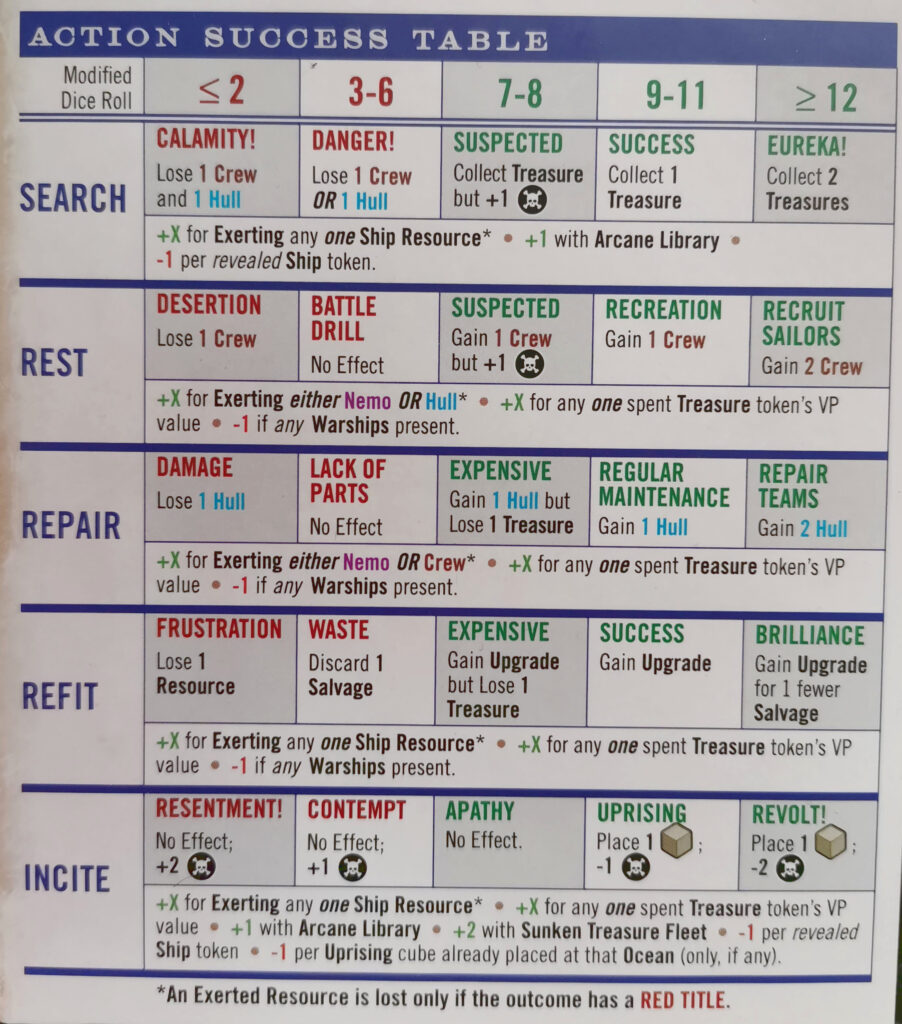
Incite – if you pass the test, you can place an uprising cube in a space next to the ocean you’re in. This reduces your notoriety, and can count towards victory points at the end of the game.
Move – spend a point to move to a connected ocean.
Rest* – pass a test to gain back 1 crew on the crew track.
Repair* – pass a test to gain 1 hull back on the hull track.
Refit* – when sinking ships you can choose to take them as tonnage, which fills a board on the main board, and counts towards end of game scoring, or take them as salvage. Passing a refit test means you can spend your salvage on one of the available Nautilus upgrades, which grant you bonuses for the rest of the game.
Search – if your current ocean has a jewel available, you can test to see if you recover a treasure. Treasures include VPs, one-time bonuses, seen wonders, and sometimes even bad things.
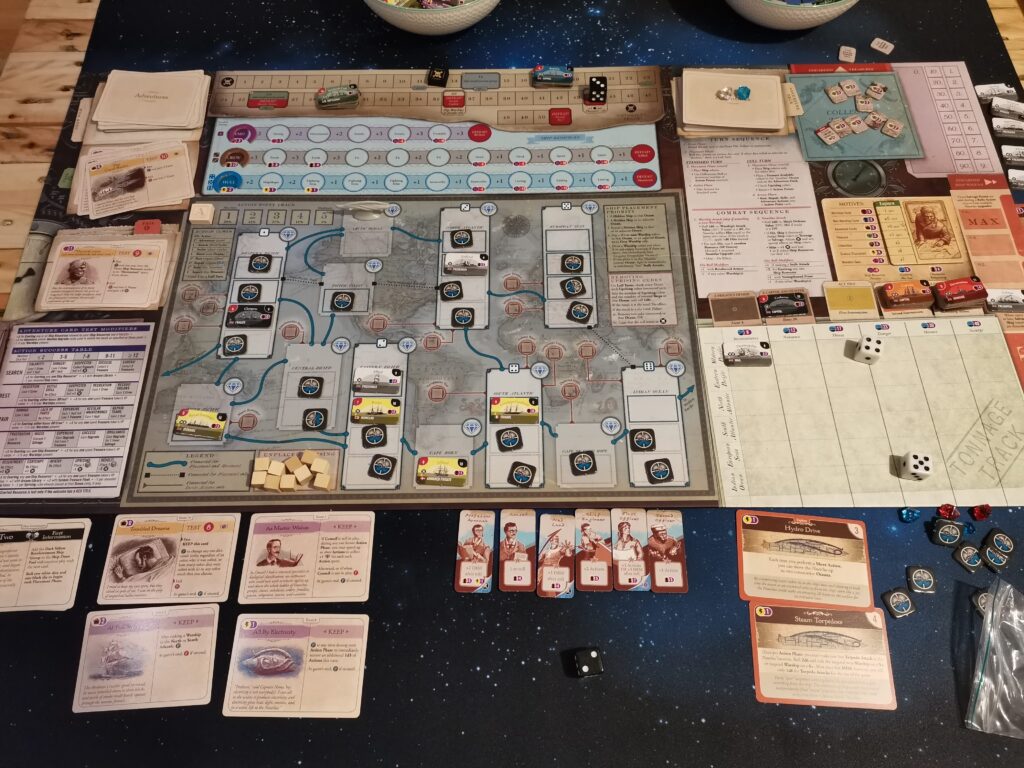
All actions cost one action point, except those marked with an asterisk above, which cost two. The exception to this is a lull turn, as mentioned above, when you roll a double number on the dice. You don’t have to spend all of your action points each turn, you can choose to carry some over for the next turn, and it’s these you can spend during a lull turn to get those actions that cost two action points, for one point instead.
Tracks and Exertion
As is pretty obvious now, Nemo’s War is a game about rolling a lot of dice. Initially it’s only two, but by the end of the game that will be at least four as more are added at the beginning of subsequent acts. Dice rolling is inherently luck-based, there’s no skilful way to roll dice without cheating, so how does Nemo’s War manage to mitigate this to prevent the game becoming all-too-difficult because of a streak of bad dice rolls?
Exertion is the answer. At the top of the board are three tracks which you maintain during the game. One for Nemo himself, one for the crew, and one for the hull of the ship. Before you roll the dice for a test, you can choose to exert at least one of these tracks. To do this, the track marker is placed halfway towards the next space to the right, and indicates a DRM of anything from +1 to +3 to add to your roll. This gets taken into consideration with any negative DRMs (e.g. attacking a ship with a revealed warship in the ocean counts as -1) and added to the total of your dice roll. This process of exerting your resources is a core mechanic of the game. There are other conditions where you can spend treasures collected, upgrades of the Nautilus, or event cards you’ve collected, but most of the time it’s the exertions you’ll use.
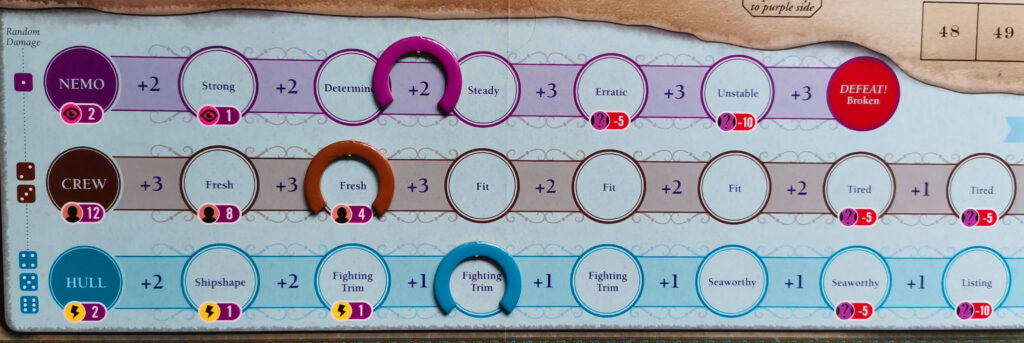
If your test passes, you move the track marker back to where it was, and nothing is lost. If you fail the test, however, the marker completes its move to the right and you suffer a loss on that track. Choosing which resource to exert and when is critical to the game, and I find that it transforms that element of luck into something exciting. There’s a real sense of achievement when you pass a test through exerting something, but only just, and the knowledge that you only passed because of your choice really adds to the feeling of captaining this boat.
As well as these three tracks, there’s a fourth, the Notoriety tracker. Certain actions, like sinking ships, adds to Nemo’s notoriety, and the marker moves up along the track. At certain points on the track there are a pile of ship tokens, and if you hit that mark, those tokens are added to the ship draw bag. Further up the track there’s even an additional black die, which means you end up placing an extra ship every turn. I really like this feature, it works so well thematically and mechanically. You can’t go around sinking half the world’s navies and expect not to get noticed, or to have more warships come knocking on your door.
Near the start of the review I mentioned that the crew and characters from the book were in the game. Each of them is represented with a special tile in your player area, and these grant a one-time bonus that can be used at any point, usually to fix the result of a particularly bad roll. If one is used, it’s flipped to show a coffin, and thematically you can think of it as them sacrificing themselves for the greater good.
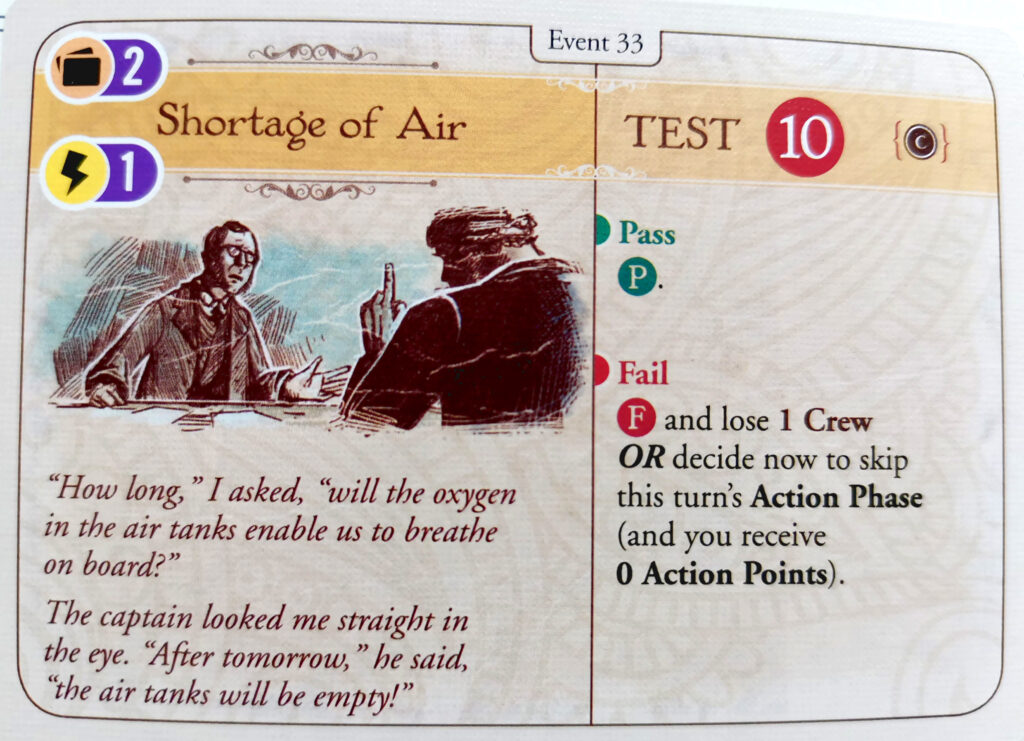
Ending The Game
Play continues in this way, roaming the world’s oceans, making discoveries, stirring up rebellions and searching for treasure, all the while trying to keep your submarine and crew in one piece. During the initial draw deck setup, a finale card is chosen at random and shuffled in near the bottom of the deck, and just above that a special card titled ‘Rising Action’. When this card is drawn, all hell breaks loose. Very strong warships are added to the already-sparse ship draw bag, and it’s a case of surviving until the finale card tells you what’s necessary to trigger the end of the game.
This is the only victorious way to end the game, but it’s possible to fail in three other ways. Your notoriety marker could reach a pre-determined point on the track, depending on your motive. One of the three ship resource tracks could reach the end, or you are forced to place a warship on the map, but there’s nowhere for it to go.
If you’re victorious, you total up the victory points as per your motive card. In either case, you get to open the gorgeously-illustrated Epilogue book, which tells you how you did.
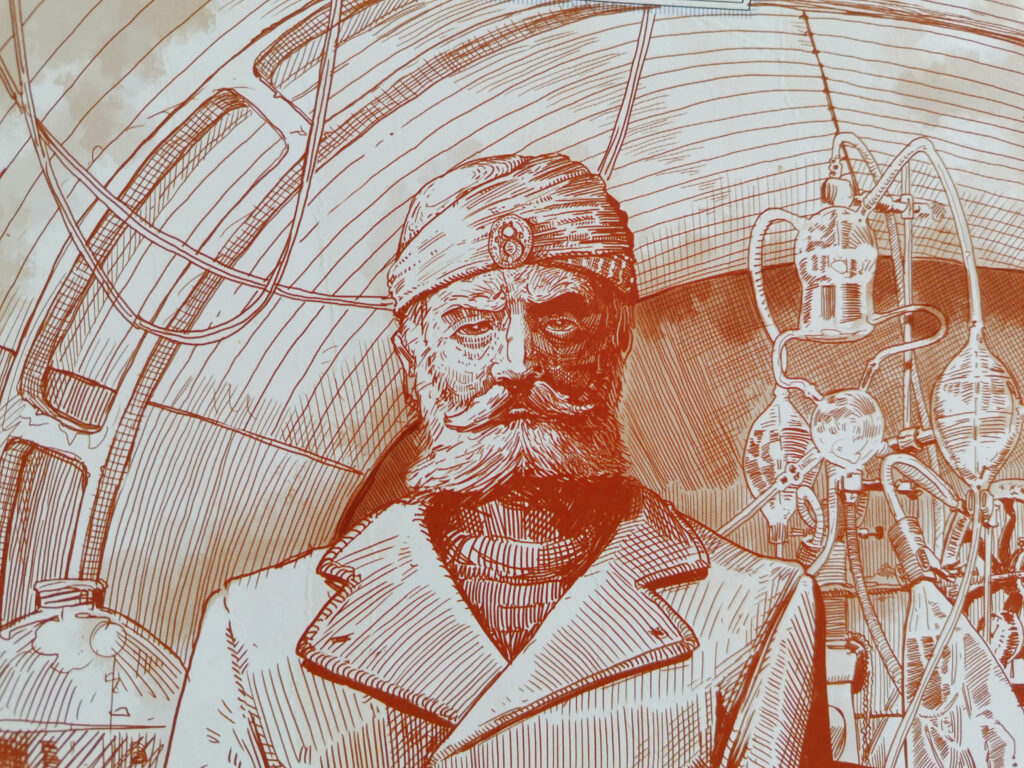
Final Thoughts
I really, really like this game. It’s probably the strongest theme for a game I’ve played. The layout of the board, the flavour text on the cards which link back to the book, the feeling of exploring and fighting, all the while just trying to keep alive – it all adds up to an immersive couple of hours at the table.
Nemo’s War is a difficult game. A really difficult game. There are varying difficulty levels you can play at which alter the setup of the game, but even on the easy mode, this is anything but a walk in the park. It’s not difficult because you’re reliant on the luck of the dice, it’s just a tricky blend of balancing resources, mitigating risks, and chasing those elusive victory points. You have to plan for failure at some point, and even with that, the temptation to cheat is just too strong sometimes. I’ll admit that in my first game I rolled a double-one and said out-loud “There’s no way I’m having that, I’m rolling again”.
There’s an old adage of “You’re only cheating yourself if you cheat”, and it’s especially true here. This game is a test of your game-playing skill, but it’s also a story. It’s a story of underwater adventure and intrigue, it’s a tale of ups and downs, losses and wins. You could cheat every failed test if you wanted to, but take it from me, the feeling you get when you just survive to win the game, after overcoming all troubles and obstacles, it’s fantastic. It’s like watching a great thriller, when the film ends you find yourself finally exhaling and thinking “what a ride!”.
It’s worth noting that there is a co-op variant in the box. I haven’t tested it myself, but this game really is made for the solo experience. It’s an experience unlike any I’ve had in other games. As a Eurogame fan, it’s ingrained in me that in order to get the most from a game, I need to win. Whether that’s getting the most points, making it to a certain space on a track first, it doesn’t matter, the aim is to win. And while that’s true in Nemo’s War to an extent, if only to read the epilogues and see the illustrations in the book, even a loss in this game is special. It’s a story of one person’s adventure under the sea in search of something special to them, and whether or not they managed it.
If you’re a solo player, I can’t recommend Nemo’s War enough. If you’re a Eurogamer at heart, there’s ample planning and management here for you, and if you’re an Ameritrash fan who loves nothing more than a good fight and a strong theme, this game is positively dripping with both. It’s not for everyone, I realise that, and those who hate dice probably won’t enjoy it as much, but for the rest of us, there’s a special game waiting to be played, and a unique story waiting to be told.
